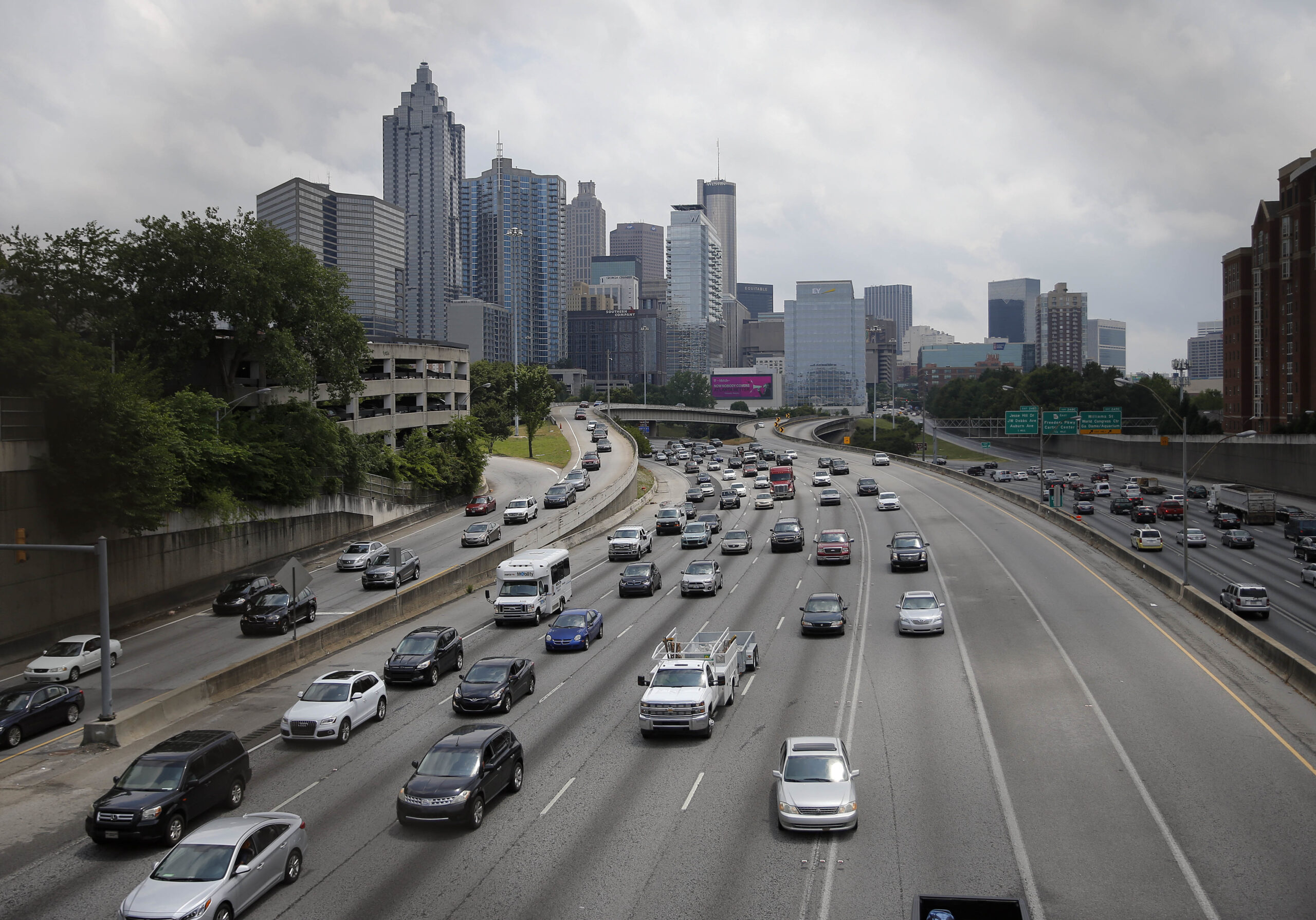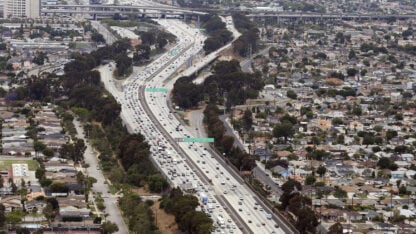Atlanta neighborhoods that were subject to racist housing policies decades ago have higher levels of air pollution than other neighborhoods, according to a recent study that looked at the legacy of redlining in hundreds of American cities.
Experts say the study, published in the journal Environmental Science & Technology Letters, shows that decisions made nearly 90 years ago still affect people’s lives unequally.
In the late-1930s, the federal government’s Home Owners’ Loan Corporation graded American neighborhoods for how risky it considered loans to be in those areas. Areas graded “A” were considered safer investments, and the scale went down to “D” grades, considered “hazardous.” Those “D” neighborhoods were shaded red on maps.
“They were really explicitly racist in how they designated what neighborhoods were going to be considered favorable or unfavorable for mortgage lending,” said Josh Apte, a professor of environmental health science and civil and environmental engineering at the University of California, Berkeley.
Apte, who’s interested in disparities when it comes to air pollution, layered the old maps with more recent demographic information from the Census and with air quality data. He and his co-authors found that nationwide, even though housing discrimination has been outlawed for decades, the areas that the government rated “D” have more polluted air than those rated “A.”
In Atlanta, according to the study, nitrogen dioxide pollution in the lowest-rated neighborhoods is nearly twice as high as in the highest-rated neighborhoods. That’s a pollutant that comes from car and truck tailpipes that can exacerbate asthma. Another pollutant, PM 2.5, which can come from industrial sources, is also elevated in neighborhoods that had been given the “D” grade. It can exacerbate cardiac and lung conditions.
“That’s going to be associated with real and important health effects,” Apte said.
He said the neighborhoods that were considered lower grade got those designations both because people of color lived in them, and also because of their proximity to polluting industries. But then once those neighborhoods got those lower grades, it could be used as a justification to put even more pollution near them. They were also neighborhoods that often lacked the political power that richer, whiter neighborhoods had.
“Our infrastructure is really sticky,” he said. “So the highways that were built decades ago, that were beginning to be planned in the 1930s when these redlining maps were drawn, of course, they’re still major highway corridors today. And so whatever decisions that were made a long time ago by people who aren’t even alive anymore still matter a lot for us today.”
Previous research had already shown that on average, people of color breathe more polluted air than white people do in the United States, regardless of income level. Apte said that still holds true.
“There’s all sorts of different structural forces that are leading people of color to be disparately exposed to air pollution, and redlining is one important variable, but it’s not the only one by far,” he said.
Na’Taki Osborne Jelks, an environmental and health sciences professor at Spelman College and co-founder of the West Atlanta Watershed Alliance said the findings in the paper aren’t surprising.
“It’s one of those things that from a community perspective, people have anecdotally known to be true,” she said.
Historically redlined communities have less tree cover, on average, and are hotter than other parts of cities. Jelks, who wasn’t involved in this new research, said those factors and the exposure to pollution are heaped on top of other issues in West Atlanta neighborhoods: aging infrastructure leading to flooding and sewer overflows, and dangerous levels of lead in people’s yards in English Avenue and Vine City.
“Many times, communities of color and low-income communities suffer from cumulative risks,” she said. “The point of a lot of this research, at least from a community health perspective, is to be able to use this data and the analysis of this data to press for actionable change.”










